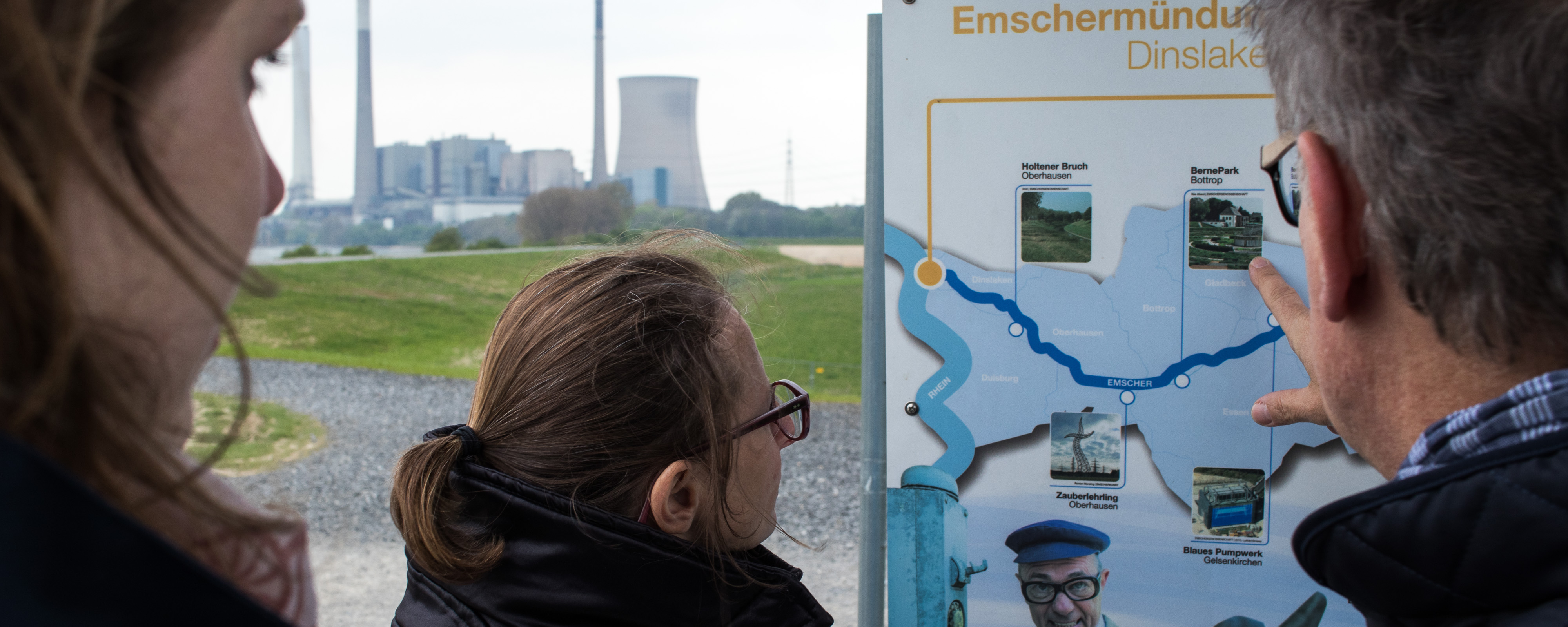The quest for greater environmental and social quality in the rivers of Germany is recent. The largest investment in river restoration projects in the world is underway in the Emscher River, which began in the 90’s and is expected to close an important phase in 2018.
The Ruhr Valley region was highly industrialized, based on mining and the steel industry. The Emscher canal, exposed to open air, was the way found for the transportation of sewage and industrial waste to treatment plants at the end of the 19th century. This solution remained active due to the difficulty in constructing underground galleries – the numerous presence of mines could cause constant collapses.
Susequently, with the decline of these sectors in the last century, the region was faced with economic, social and environmental collapse. The decline was reflected in the difficulty of attracting new businesses and maintaining those established there. To avoid unattractiveness, the city had to reinvent itself. Important step for this is river recovery. Today, it is a worldwide example of recovery and how it is possible, through this concept, to revitalize the entire Valley.
From the source, there is fauna indicative of good water quality. Nearby there is an educational center, visited by students. Environmental education and cultural projects permeate the whole course of the river, with the use of the informative totems and interventions by local or renowned artists.
Abandoned industrial areas were recovered. Phoenix Lake, a park with high standard houses mixed with social housing and commercial areas, regulates the water level in case of floods. The riparian vegetation along the river pass and the installation of a park stimulate leisure activities.
It is possible to walk or cycle along the Emscher, and a parallel cycle path for mobility is planned to the future. The old treatment plant functions as a restaurant, with beautiful gardens and dormitories disguised as shackles, for travelers.
Finally, the entire mouth is undergoing a process of renaturation, providing for environmental recovery and parks for people. Environment and culture are the drivers of a new vision of the city. Locations such as the Zeche Zollverein Schacht XII coal mine, which was once the largest and most modern coal mining facility in the world, have become an industrial patrimony for Unesco.
The result is that Essen is now a university center for services, trade and events. From 2010 to here, several companies have already settled in the city, many of them among the 50 largest in Germany. Today, it is one of the most successful cases of city branding, and was chosen as the Green Capital of Europe 2017. The recovery of Emscher is the key point of this new approach.
Watch the video (subtitles available in English), originally broadcast on TVL:

